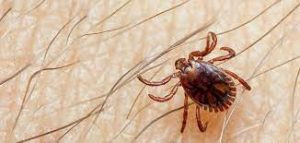Crimean-Congo Haemorrhagic Fever:

As Europe reels under a heat wave and wildfires, the rising temperatures have also raised fears of spread of viral haemorrhagic fever generally not found in colder climates.
- Crimean-Congo Haemorrhagic Fever is a viral haemorrhagic fever usually transmitted by ticks.
- It can also be contracted through contact with viraemic animal tissues (animal tissue where the virus has entered the bloodstream) during and immediately post-slaughter of animals.
- The disease was first detected among soldiers in the Crimean Peninsula (near the Black Sea) in 1944.
- In 1969, it was found that an ailment identified in the Congo Basin was caused by the same pathogen. Thus, the disease was named the Crimean-Congo haemorrhagic fever.
- Its outbreak constitute a threat to public health services as the virus can lead to epidemics, has a high case fatality ratio (10–40%).
- Animals such as cattle, goats, sheep and hares serve as amplifying hosts for the virus.
- Transmission to humans occurs through contact with infected ticks or animal blood.
- It can be transmitted from one infected human to another by contact with infectious blood or body fluids”, such as sweat and saliva.
- The ticks can also be hosted by migratory birds.
- Symptoms include fever, muscle ache, dizziness, neck pain, backache, headache, sore eyes and sensitivity to light.
- After 2–4 days the agitation may be replaced by sleepiness, depression and lassitude
- There is no vaccine for the virus in either humans or animals, and treatment generally consists of managing symptoms.
- According to the WHO, “the antiviral drug ribavirin has been used to treat CCHF infection with apparent benefit.”




